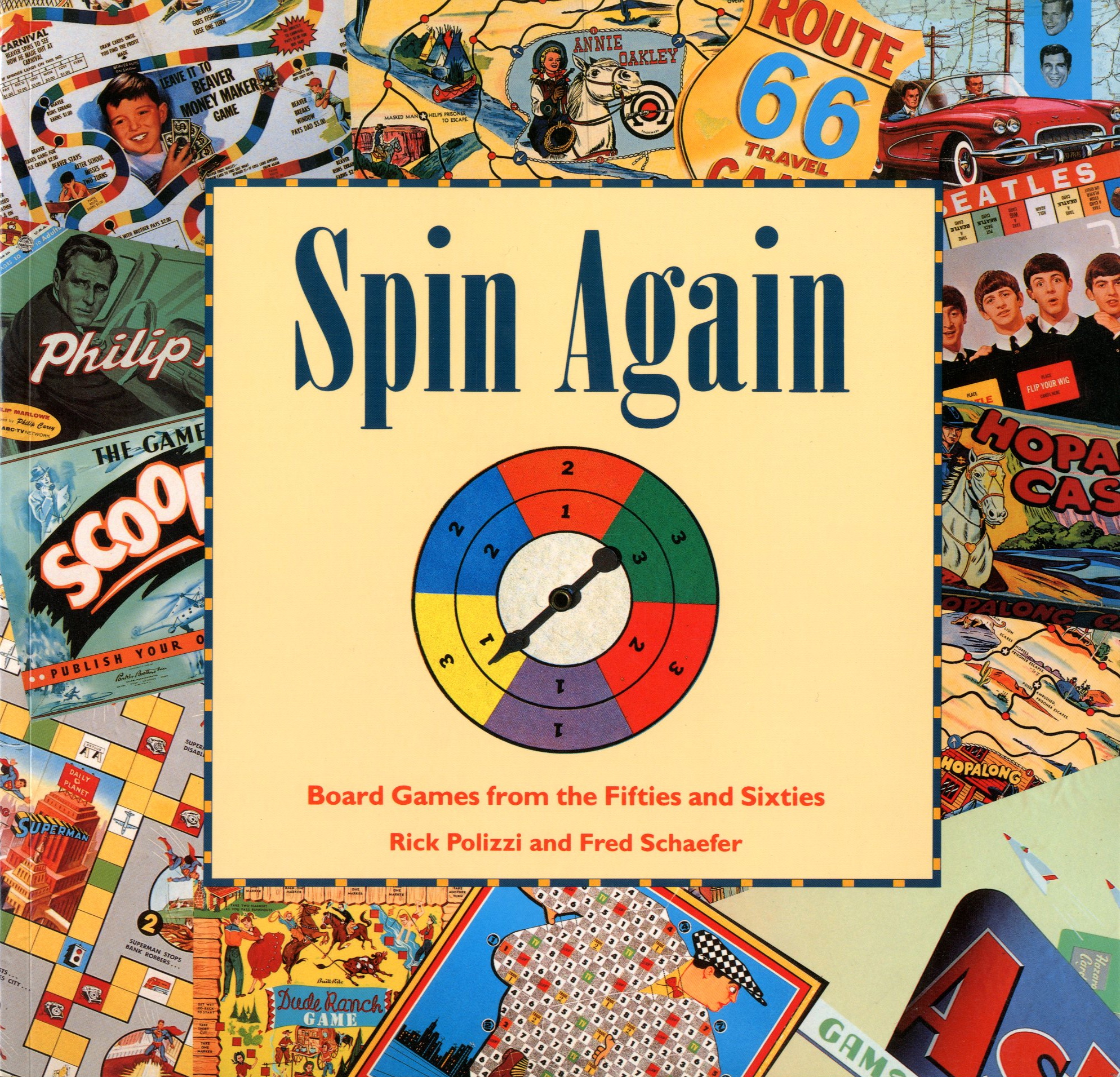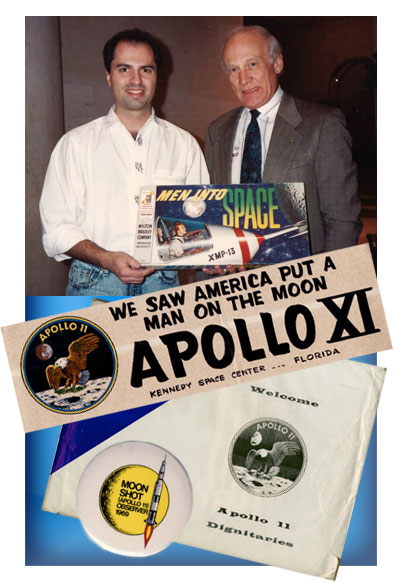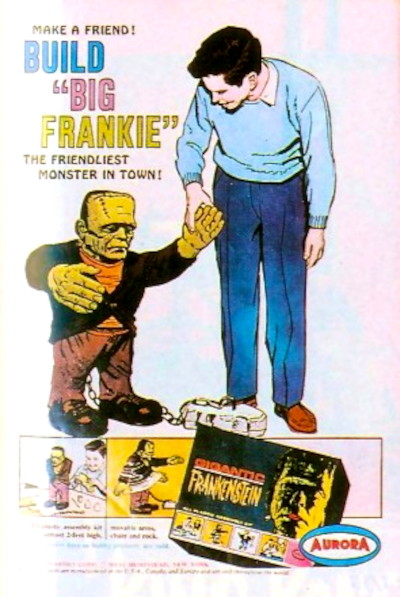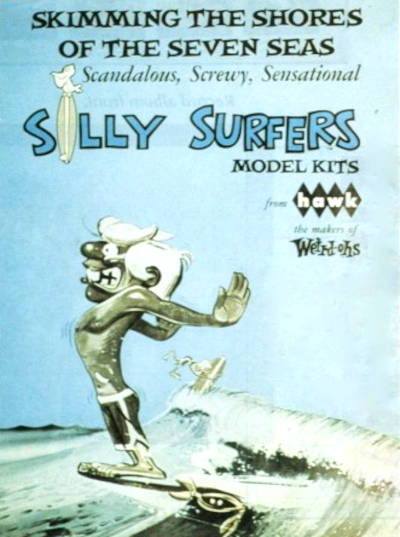In the late 80’s, while wandering around a thrift store, I found a couple of board games I had as a kid. I loved all the artwork on the old 50’s and 60’s toys and within a couple of years had a sizable collection. While doing research on the artists and designers of my game collection, I decided to write a book on the subject. Along with Fred Schaefer, a friend from New Orleans, we put together Spin Again, Board Games from the Fifties and Sixties, a coffee table book published by Chronicle Books in 1991.
Books


We did a lot of self-promotion for the book and got great coverage for it.

Board games: Collectors
Aren’t Playing, Just Buying
by RITA REIF
BOARD GAMES BOLDLY emblazoned with the images of Popeye, Cootie Nancy Drew and Superman are among today’s more visually arresting collectibles. They are also among the least expensive, although buyers complain that prices are on the rise, with some selling for as much as $300.
Collectors of such 1950’s and 60’s ephemera are seeking games packaged with powerful graphics borrowed from comic books, television, movies and the album jackets of rock recordings.
The popularity of these post World War II collectibles follows an earlier interest in 19th century board games that were elaborately decorated with fussy typography and images. Some of these games command considerably higher prices, as much as $8,000
About 190 such games can be seen in “Victorian Pleasures: American Board and Table Games of the 19th Century From the Liman Collection,” which is at Columbia University’s art gallery in Schermerhorn Hall, Broadway at 116th Street, through Jan. 25. The catalogue is $10.
“People collect games that look great but are often the least challenging to play,” said Rick Polizzi, the co-author with Fred Schaefer of the new book “Spin Again: Board Games of the 50’s and 60’s” (Chronicle Books).
“Back in the 1950’s and 60’s, game producers paid more attention to creating big splashy box covers than to making games with content.” Most of the vividly graphic games, which often proved unplayable, sold poorly and soon disappeared from toy stores. Because these are now scarce, they are in demand as collectibles.
“The best games, including Monopoly and Scrabble, were mass produced and are still being made,” Mr. Polizzi noted. “There’s no scarcity of vintage sets at flea markets and garage sales.”

In 1955, Transogram developed a game based on TV’s “Dragnet” in 1959, the company marketed the nearly identical “Perry Mason.”
Mr. Polizzi, an independent film maker in Los Angeles, said that even if such games were scarce, they still might be ignored by collectors because their graphics are dull. “Take Scrabble, a brown box with the
Bright packaging,
inspired by comic
books, TV and
rock albums, is the
name of the game.
word Scrabble on it,” Mr. Polizzi said. It looks the same today, more or less, as it did 30 years ago.”
Most of the 180 board games illustrated in “Spin Again” are from Mr. Polizzi’s collection of 800. He began collecting less than three years ago when he found an old “Beverly Hillbillies” Game, which he had played as a child. It cost $1. “Luckily, I still find games at garage sales for as little as 50 cents,” he said. “The most, I’ve ever paid was $145. It was for my favorite game, ‘The Twilight Zone.'”
Most of the games that Mr. Polizzi buys by mail and at flea markets cost $40 to $50. Among the exceptions is one of the four games from the 1960’s, modeled on the TV adventure series “The Man From UNCLE”: The Thrush Ray Gun Affair, a rarity that commands $120 to $130.
Television’s profound impact on board games is seen in just about every type of game. In addition to those based on crime shows (“Dragnet” and “Perry Mason”) and adventure series (Hopalong Cassidy,” “Gunsmoke” and “77 Sunset Strip”). games spun off of superheroes and rock stars after television exposure. The Beatles, Flip Your Wig Game appeared after the Liverpudlians made their United States debut on “The Ed Sullivan Show” in 1964.
Politics and Sputnik also inspired games. The box for The Kennedys, produced in 1962, shows John, Robert, Edward and Jacqueline Kennedy as portraits carved on Mount Rushmore. In Astro Launch, from 1963, space wars are played on a board depicting the universe with a translucent Earth at the center.

Prices are rising for ephemera like The Beatles, Flip Your Wig Game, which Milton Bradley marketed after the British band made its American debut on “The Ed Sullivan Show” in 1964.
Board games from the 1920’s to the 70’s and books on the subject have been stocked for more than a decade at Mythology, 370 Columbus Avenue at 77th Street in Manhattan. “Board games are escalating in price, and the market is beginning to dry up,” said Bill Bailey, the store’s owner. “At first we paid from $10 to $50 for games. That enabled us to sell all of them for under $100.” But the most graphic games are rapidly disappearing, he said, and they now range from $25 to $295.
REMEMBER THE NEEDIESTI
While most of today’s collectors pursue 20th-century games, others concentrate on the Victorian examples. In July, a record price at auction $8,250 was paid for The New Parlor Game: Baseball, from 1869, at a sale in Wethersfield, Conn. Previously, the most expensive game sold at auction was The Man in the Moon, a wooden board game from 1901. It brought $6,050 at the Robert Skinner Gallery in Bolton, Mass, in 1968.
The 19th-century examples on view at Columbia University represent a small sampling of the board games owned by Ellen and Arthur Liman of New York; she is a writer and painter, he is a lawyer. Mrs. Liman said that their collection of about 1,000 games, made mostly between the Civil War and 1900, reflects the peak years of rich coloring and fanciful lithographic images. The Limans began collecting 11 years ago when they bought a map game at a garage sale for $4.

Astro Launch, made by Ohio Art in 1963, came onto the market after the Soviet Union’s Sputnik satellites went into orbit.
The Outlook
Thursday
August 17, 1995
Life/Arts
ENTERTAINMENT / D3
TELEVISION / D4
COMICS / D5

Over the past 10 years, collector Rick Polizzi of West Los Angeles has accumulated more than 1,200 board games, mostly from the 1950’s and 60’s.
GAMES KEEPERS
Story by Saul Rubin STAFF WRITER
Photos by Ed Carreon STAFF PHOTOGRAPHER
Encountering a game played in your youth is a lot like meeting up with a long-lost childhood friend. In both cases you’re sure to spot the familiar features and the reunion will trigger a wave of memories.
That’s the experience that envelops you as you enter Rick Polizzi’s game room. It’s crammed with dozens of board games, mostly from the ’50s and ’60s. Mousetrap. Chutes and Ladders.
Mousetrap. Chutes and Ladders. Operation. Life. Easy Money. Go to the Head of the Class. The gang’s all here.
During the past decade, the West Los Angeles collector has accumulated more than 1,300 board games, mostly from those key baby-boomer years. Many are stored here, while others are kept in his hometown, New Orleans.
In addition to their nostalgic value, the games are a valuable historical reference. They also reveal how kids once spent those inane playtime hours.
Many of the games were spinoffs from popular television shows and often were produced with little thought to the game itself, Polizzi says. If the show was popular, game companies slapped its logo and a picture of its stars on the cover. That was enough to trigger sales.
That was true of Polizzi’s first purchase, the Beverly Hillbillies game. He saw it after his wife dragged him into a thrift store to browse.
“I thought, ‘Wow, that looks cool,” he says during an interview at his apartment, surrounded by his collection. “There was nothing great about the game. It was a plain board game.”
The purchase set him on a 10-year buying spree that’s filled his shelves with the likes of Face the Facts and the Camp Granada Game.
Polizzi often invites friends over to play these games. He enjoys watching the facial expressions when they come across the familiar boards and pieces.
“Everyone remembers that one,” he says, displaying the Rock ’em, Sock ’em robot fighting game. Players controlled two fighting figures in a plastic boxing ring. A well-placed jab could “knock the block off” the opposing fighter.
Polizzi thinks that a Hopalong Cassidy board game was the first spinoff from a television show. The head of Milton Bradley at the time, James Shea, observed the character being mobbed by adoring young fans. He saw the possibility and launched a game aimed at kids with a Hopalong theme, Polizzi said. Hundreds of others followed.
Even with the advent of computer games and more high-tech diversions for kids, simple board games have remained a constant in the games world.
“The evidence is that they can exist side by side,” says Jodi Levin, spokeswoman with the Toy Manufacturers of America, an association that watches trends in the toy industry.
Baby boomers
get nostalgic
for games of
their childhood
• • • • • • • • • • •
Polizzi says most baby-boomer games, like those above, were spinoffs of popular television shows and often were produced with little thought to the game itself. In addition to his collection, Polizzi has written two coffee-table books about board games spanning the ’40s through the ’70s.
Aurora
Aurora founder Abe Shikes (center) Vice President, John Cuomo (left), and Treasurer, Joe Giammarino (right) debate whether monsters will sell better than their slot cars.
In the 1960s, the words monster models and Aurora were synonymous and although the Aurora Plastics Corporation had been producing model kits since 1952, they found their niche in the hobby world by creating some of the best monster models anywhere. Aurora owed some of its success to Universal Studios who, in 1956, unearthed a vault full of horror films from the 1930s and 1940s. Universal sold the frightening flicks to television stations nationwide and the monster craze took off faster than you could say Bela Lugosi. Aurora’s marketing director, Bill Silverstein hammered away at Abe Shikes, the company’s founder, to release kits based on Universal monsters. Neither Shikes nor Aurora’s vice president, Joseph Giammarino were as thrilled with the idea as Bill was, however he was allowed to start the project anyway.
He conducted marketing research and even consultations with psychologists to determine if the kits would be too frightening and upsetting to youngsters. In the end, the doctors couldn’t agree on the subject. Silverstein, undaunted, then contacted Bill Lemon to sculpt the figures while artist James Bama was hired to create the stunning packaging.
When Aurora finally issued Frankenstein in 1961, many hobby store owners weren’t sure of their marketability. They quickly changed their minds when Aurora’s initial shipments sold out within days. Two Frankenstein molds had to be employed around the clock spit- ting out about eight thousand kits per day to meet the demand. Ultimately, Frankenstein was the best selling kit in Aurora’s history. If it snarled, drooled, grunted, or was able to destroy a city, kids wanted it, and Aurora delivered! Since many of these kits were reissued, their built-up value has drastically decreased.
One of the milestones in the modeling world during the 60s was the Monster Customizing Contest sponsored by Aurora, Famous Monsters Magazine, and Universal Studios. It encouraged kids to modify existing Aurora kits for prizes. This is the plaque awarded for first place.
GIGANTIC FRANKENSTEIN
Aurora 1964, Scale: 1/8
Boxed: $1350.00, Built-Up: $375.00 Designer: Reuben Klamer
The $4.98 price tag made kids shun this version of Frankenstein’s monster almost as much as the villagers did in Mary Shelley’s book. The original proposed model came with a motor inside that made the monster walk. When inventor Klamer showed the motorized kit to Aurora president, Abe Shikes, however Shikes said “take the motor out and I’ll buy the thing.” Painted by: Paul Madsen
FREAKS, GEEKS, & ODDBALLS
Weird-oh’s
In 1963, the Hawk model corporation was a contributor to an oversaturated model airplane industry and was close to becoming a floundering business. Hawk illustrator and package designer, Bill Campbell was bored at his desk one day and decided to make his own attempt at a line of monsters on wheels. He took his rough sketches to the board of directors at Hawk and introduced them as his Weird-oh’s.
The idea was met with overwhelming praise and rushed into readiness for the upcoming annual model show in Chicago where the new freaks on wheels received over a quarter of a million orders. Ed Roth had designed some pretty unlikely cars for his monsters to steer but had nonetheless retained some sense of faithfulness to existing cars. Campbell’s Weird-oh’s, on the other hand, drove anything you could attach wheels to.
A second wave of Weird-oh’s was planned with more human-looking characters behind the wheel. Included in the line was a hockey player named “Freddie Faceoff, Stick Handler Extrordinaire.” Similar to Killer McBash, Freddie was ramming his hockey stick down the throat of an opponent, forming the stick’s shape out the back of his head. The model never got further than Campbell’s sketch pad as the craze died only after a year.
Some of the Weird-oh’s and Silly Surfer kits were re-released with glow plastic and new boxes in 1969. In the seventies, Hawk was acquired by Testors, the people who brought you that great smelling glue and in 1983, they reissued some of the Weird-oh’s and Frantics in their new Grodies series. Their recent reissue in the 1990s by Testors is further evidence of the timelessness of these freaks.
Silly Surfers
On his way to the office every day, toy designer, Reuben Klamer was intrigued with all of the Woodys with surfboards he saw driving along Sunset Boulevard toward Mecca- the beach. Inspiration took over and Klamer came up with the idea for a series of kits based on surfing. He, along with Bob Allen and Mel Shaw created a line of comical beach freaks known as the Silly Surfers in 1964.
The trio made a few trips to the shore for research and found a whole sub-culture among the sand. Sculpted by Allen, one of the creators of Tom & Jerry, the Silly Surfers portrayed all the characters the team saw at the beach. When the series was proposed to them, Phil and Dick Mates, the founders of Hawk, thought the subject might be too regional, until they heard about the growing novelty of wake surfing taking place around the country. This small, but growing craze allowed California dreamers to become surfers by riding the waves made from the wake of a boat. The Mates’ went out to California where Klamer showed them his new line. They took one look at the prototypes and immediately bought the rights to them. One other figure, Surf Monster Hangin’ Six, was designed but never released. Bill Campbell did the box art for the whole series.
Testors re-released all of these kits except Hot Dogger and Beach Bunny Riding Tandem, under their Weird-oh’s line in 1994.
Rick Polizzi, born and raised in
New Orleans, is co-author of the
widely-acclaimed coffee table book
Spin Again: Board Games from the
Fifties and Sixties (Chronicle
Books) and author of Baby
Boomer Games (Collector Books). A
graduate of The American Academy of
Dramatic Arts, he has created many
character voices for animated TV
shows, was a writer,
segment producer, and on-air reporter
on PM Magazine, and was also the
director and co-writer of the short film,
Toby, which won the silver medal at
the Melbourne International Film Festival.
Rick lives in Los Angeles
with his wife, Carla, and
their daughters, Hannah and Bryce.
My ‘sploded bio from Classic Plastic.













































